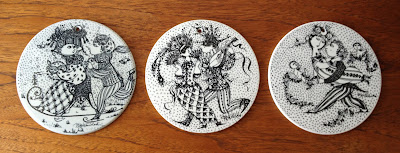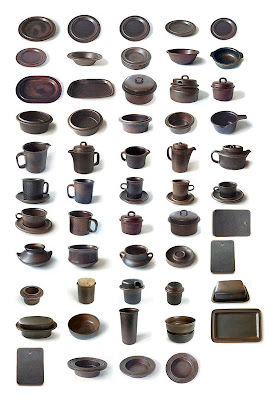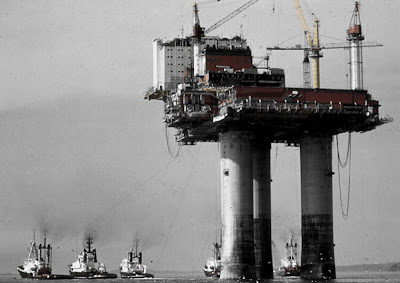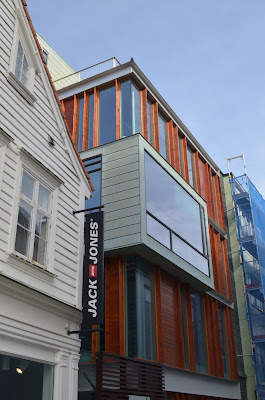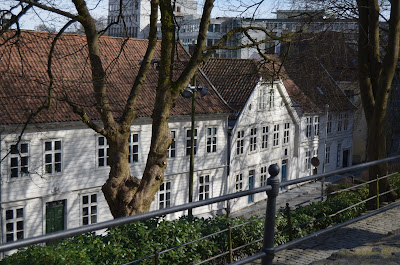Both are designed by Barbro Tryberg Boberg and Maria Holmer Dahlgren for BoM UNITED and Formverket. I love the 60s vibes, especially on the whimsical tray.
Electrical outlets and switches need to be moved, so we're taking down the wood panels on two walls to hide all cables. Everything will get some fresh coats of white paint, and we'll have some new wooden flooring.The picture in the middle shows the existing walls. My house is quite nostalgic, and my strategy is to keep renewing it with modern contrasts on the inside, while letting the walls and floors reflect the style of the house. I'd love to design a house for us one day, but I tell you it's A LOT easier to draw other people's houses! A colleague who lives in a house of his own design once told me "I'm confronted with my own choices all the time, it's quite exhausting!"
When I started planning our new kitchen, I searched everywhere for some great wood surfaces, but they were hard to find. White is big here now, alongside the lighter nordic woods. I just threw out a white kitchen and wanted something else this time. Some time ago, I found this cabinet maker called Tingbø, whose small family business is in the southwestern city of Egersund, home of the great pottery. They started their business just a few years ago, and have already gotten some well deserved acclaim in glossy magazines. I had more or less decided on walnut cabinets, but when Tingbø told me he could make me something in teak, I was sold! They have a small, but very nice selection of designs, but they can pretty much make whatever you want. As mentioned in a previous post, they made the display cabinets and interior for the Egersund pottery museum.
Our kitchen is going to be the first they make in teak, so there's no photos to show you yet, but the following images showes the type of drawers I've ordered. The cabinet doors have the same type of minimal slots. The kitchen below is in walnut and has a bit more pattern than teak, but it gives you an idea. The counter will be white stone, hood, induction top, oven, light switches and electrical outlets black. I've found some very simple matte black cylindrical lamps to put over the counter and I'll order a String shelf (wall hung) in walnut (the closest to teak they have) with black sides to store some of my Figgjo and Stavangerflint pieces. I've also planned to let my Wiinblad plaques add to the black and white theme:-) I have january, february and march, I hope to find some more! Wishing you all the most fantastic weekend!










